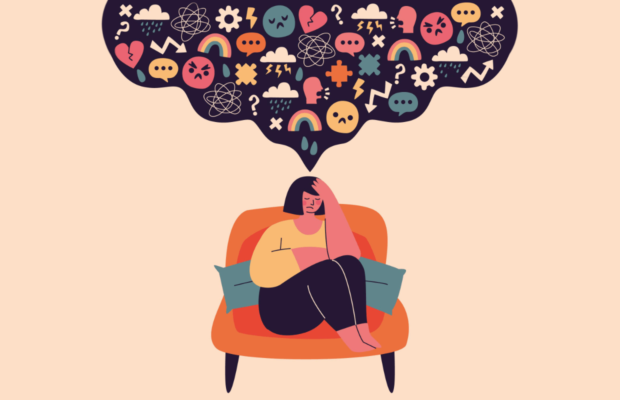Staff offer suggestions for coping with depression, anxiety

Many students in the Cedar Falls district are struggling with depression and/or anxiety. This can become more of a problem if it isn’t addressed quickly and efficiently.
Depression is not the same as being sad. Some people fail to realize that and often mistake depression for sadness and vice versa. Depression is a mental illness, whereas sadness is simply an emotion. This is a common misconception, most often made by those who lack the understanding of what it is like to have depression and anxiety.
Many counselors, therapists, and psychiatrists will agree that depression is no laughing matter, nor is it a choice. Nobody who has depression chooses to be depressed. It’s the same with anxiety. Although it may feel hopeless to find ways to cope and heal, some methods can be utilized to help. For example, art may help those with depression or anxiety portray how they are feeling.
Micah Smith, an art teacher at Peet Junior High, said in coping with mental pressures, “In my own, personal experience, art has been a unique and healthy way to process and make sense of my emotions. I believe that some of my most meaningful art has come out of seasons of depression. Art is not only a safe way to process emotions, but also to communicate those feelings and experiences to other people.”
According to Psych2go, if someone is dealing with depression, it doesn’t always show. They are likely to appear “normal” or “fine,” even though they are the opposite. This can make it difficult to tell if someone is struggling with depression, which will make it difficult to help that person. Remember that their pain is valid, and there doesn’t have to be a specific cause or person to blame for the pain that person feels.
Peet counselor Rebecca Lins said, “It is so incredibly important to acknowledge the students with depression and/or anxiety. It can feel very isolating when students are experiencing depressed thoughts or general anxiety, however, if it is even more prevalent and a possible disorder, it could be life-threatening if it lead to self-harm or suicide ideation. It is wired in our DNA to belong and connect with others, depression and anxiety can interrupt that connection and cause major barriers that can lead to further harm (mentally, emotionally, physically). Just like we go to the doctor to treat a sore throat or the flu, it is imperative that we treat depression and anxiety. There are so many ways to cope, but a few would include seeking help from a trusted adult and maybe even a professional therapist. I think deep breathing exercises and reframing how we see worry or anxiety can help us address when our body is in that stress response. I think connection is key and always a part of the healing/coping process. I think finding things that bring you joy, even if it’s a healthy distraction until you can do the next right thing. At times, medicine might be needed as a part of the plan, but I always think it needs to be coupled with practices that we can work on and apply to help ourselves.”
Don’t belittle or discriminate against them for their depression, as this can worsen their symptoms. Don’t say “I understand” unless you have also been diagnosed by a medical professional for depression. If you do say this, and you don’t have depression symptoms, you can make the person who does have depression feel like you come off as ignorant, or you can simply frustrate them. Don’t tell them that you feel the same way, especially if you don’t know what that person is going through. Just be there to listen, and don’t judge them for what they say. If they talk about suicide, don’t tell them they are wrong, or a bad person. Just listen, and ask if there’s anything you can do to help. Be there for support when they need it. Most people just want to be heard. If you don’t listen, that person’s depression/anxiety may worsen.









You must be logged in to post a comment Login